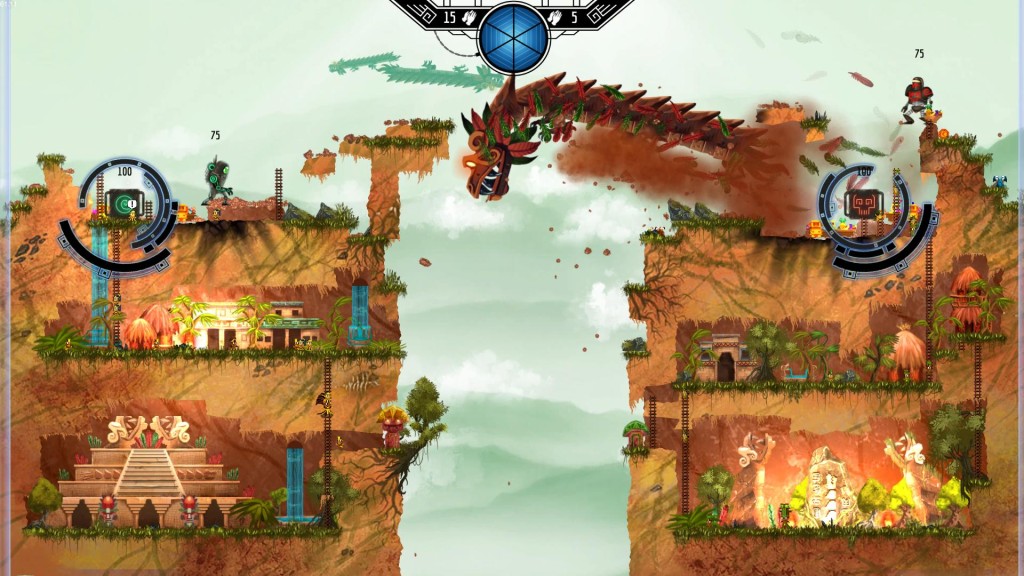When you’re prototyping, part of the job is to learn whether the gameplay is interesting and fun, and to find out where improvements could be made. This may sounds pretty straightforward, but it can get quite tricky. For instance, who’s to determine what’s interesting or fun? What works for me can be a big turn off for you. To figure out what really works and what really doesn’t, it can be a good idea to let other people playtest your prototype.
Since the creation of a prototype takes but a fraction of the time spent on a polished game, you have to be extra careful if you want useful results.
Random people are often terrible at offering useful advice. Yet, by using a proper set-up, you may discover some interesting insights underneath a pile of bad recommendations and scorching remarks. We don’t claim to have discovered the silver bullet solution to getting useful feedback from playtests, but here’s a handful of guidelines you should keep in mind.
1. Make sure the obvious stuff is covered
Before asking people what they like or don’t like about a prototype, make sure you have fixed all major known issues. The last thing you need from a playtest is people telling you about things you already know. Even though it’s just a prototype, don’t show things that aren’t ready to be shown. You may get a handful of useful remarks, but the focus of the feedback will be on the oddly behaving opponent AI or insane difficulty level, and the effort will be largely wasted.
2. Reach a certain level of graphical quality
When you’re into game design, it’s easy to forget about presentation and focus on the conceptual only. However, it’s very hard for a test audience to get engaged in a simulation consisting of only triangles and squares. Nobody asks you to match the quality of Blizzard’s CGI, but try to make your prototype less abstract. Use stickmen instead of boxes to represent characters, or browse Google Images to quickly add shape to your gameplay idea.
3. Compare using similar quality levels
Never compare apples to oranges. Again, this may sound mundane, but the devil’s in the details. When asking people to playtest different prototypes in order to compare their potential, make sure they all adhere to similar quality standards. You don’t want the risk of dropping a promising idea that has proved unpopular during a playtest, only because it wasn’t as polished as the other prototypes tested. We probably don’t have to spell this out, but it’s not a very bright idea to compare prototypes to finished games either. Not even when they share a similar aesthetic, theme or gameplay mechanic.
4. Analyzing feedback isn’t an exact science
Good job! You’ve hurdled your way past a succesful playtest and now you’ve got some feedback. So what now? Ultimately, it’s up to the creator to decide what feedback is deemed useful. The more often a remark is made, the more relevant it becomes. But that doesn’t mean a single suggestion can’t be of use either. Analyzing feedback isn’t a matter of simple mathematics, and you will often have to trust your gut feeling about what feels right for your prototype.

Playtest of the Class Compete prototype showed that one of the key mechanics was too complex, so we improved this in the next iteration of the prototype.
5. Continue after prototyping, all the way to the end
Beyond the prototyping stage, playtesting continues to be useful. We talked to Karel Crombecq of Sileni Studios who gave a talk at this year’s Casual Connect Europe where he explained how other people helped him design his latest game Mayan Death Robots. Being part of a small development team, he argues it’s very easy to get stuck in a train of thought that’s going nowhere. Sometimes you need that bit of outside input to push the project back in the right direction.
His team learned a lot about user feedback and playtesting during the development of Mayan Death Robots. In doing so, Sileni have become a fierce advocate of the design approach. Even a month before the game’s scheduled PC launch, the team was hosting playtests at every possible moment. It’s never too late to make small adjustments and they are still tweaking some stuff based on feedback they got from the latest playtests. Playtesting this late in development is also a great way to tune the artificial intelligence for a broad audience, so the difficulty of the game adapts automatically to the skill level of the player, and to find the last remaining bugs efficiently.

Sileni Studios’ upcoming title. The Mayan theme not only impacted the graphical style, but also influenced the overall design of the game.
Mayan Death Robots will be out on Steam November 20th.
Sileni Studios, like PreviewLabs, is part of the Cronos family.
